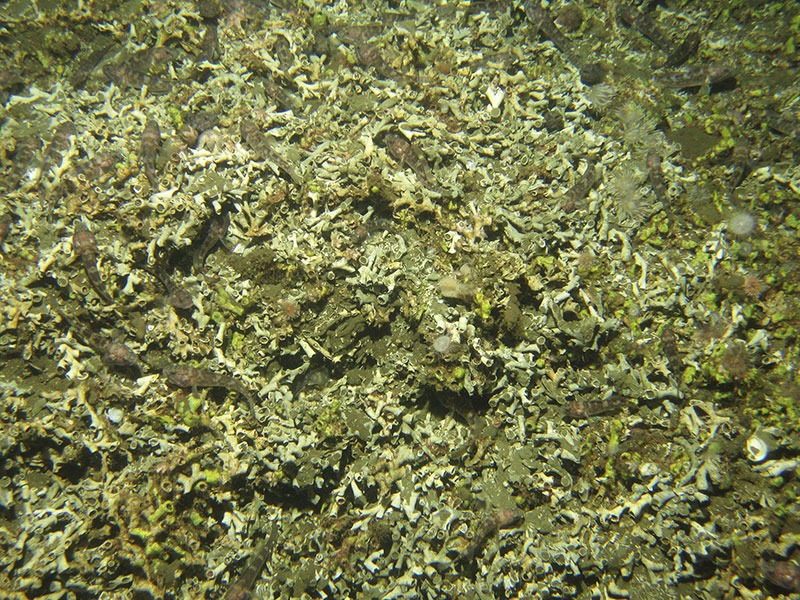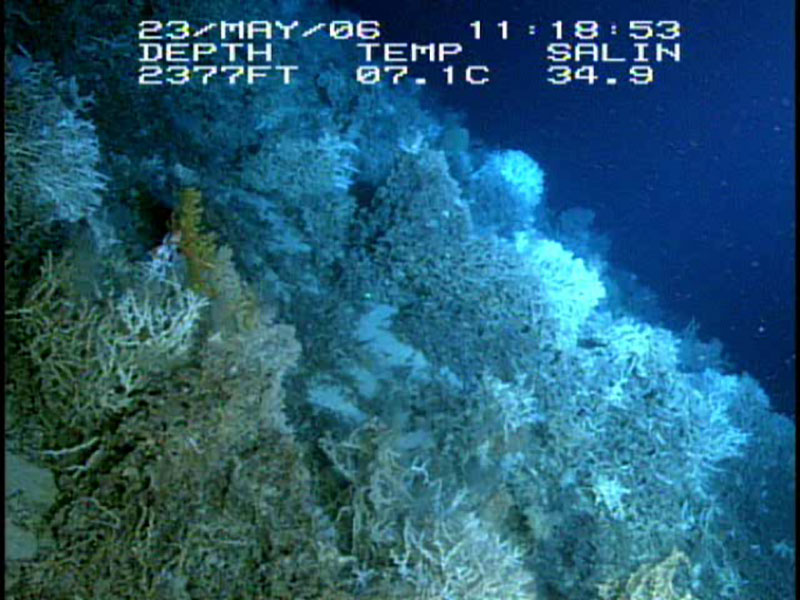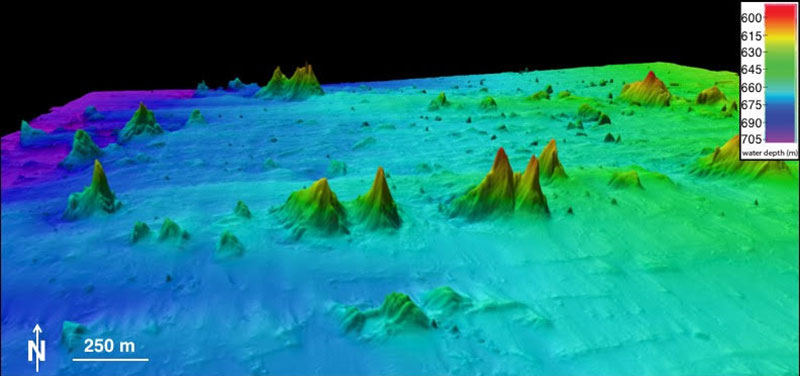by Kimberly Galvez, Rosenstiel School for Marine and Atmospheric Science at the University of Miami

Deep-sea corals, or cold-water corals, have been around for millions of years. They are globally distributed, with more biological hotspots being discovered every year. Generally, in order to survive, these cold-water corals need the right temperatures, oxygen saturation levels, and a current flow that transports their food supply. When all these conditions are met, deep-sea corals flourish. As corals begin to grow, reefs form and begin to alter the morphology of the seafloor. This is where deep-sea biology meets geology. The scale of seafloor alteration depends heavily on the current systems and the sediments that drift along with the particulate organic matter that the corals feed on.
Free-flowing sediments that drift with the currents can be trapped and baffled by a living deep-sea reef, effectively burying it. The sediments and now dead coral debris become the foundation for the next generation of coral colonization. When this cycle continues over thousands of years, we see the development of cold-water coral ridges and mounds. These ridges and mounds vary in size and shape from a few meters to massive mounds over 100 meters tall.
While many different cold-water corals contribute to overall development of these mounds, the framework-forming scleractinian corals, such as Lophelia pertusa, are among the key players in mound development. Scleractinian corals produce robust skeletons that hold the test of time and are the most frequently observed type of coral in coral mounds, whereas many other corals, such as soft corals, leave no trace behind in the geologic record.

Sediment cores retrieved from cold-water coral mounds reveal dead coral matrices and the sediments of the surrounding environments. Studying the internal structures of mounds provides invaluable insight into their development. Since these corals require specific ocean conditions, they die and halt mound development if these conditions change. When the proper ocean conditions return, mound development may begin once again.
Ocean conditions change with interglacial-glacial cycles through geologic time. As the cycles progress, sea levels change, and some ocean currents are shut down. This inhibits the transport of the elements necessary for coral survival in the region and, therefore, mound expansion stalls. When the currents return, so do the corals, and the cycle continues.
The majority of cold-water coral mounds are seen within the Atlantic Ocean, from the Porcupine Seabight off the coast of Ireland in the eastern Atlantic to the Mediterranean Sea to the Straits of Florida and the Blake Plateau in the western Atlantic. Cold-water coral systems are a major carbonate producing factory that is only just being considered in the global carbonate budget. Not only are they important in the sense of deep-sea ecosystem stability, but they also provide exceptional understanding into the history of the deep ocean.


